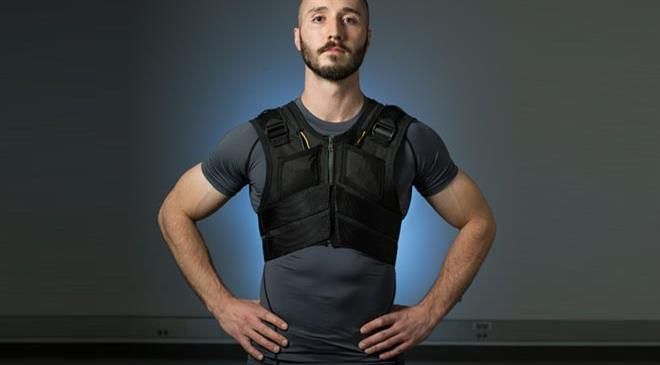Smart innerwear lowers stress on tissues
A team of engineers at the Vanderbilt University has designed a smart innerwear that combines the science of biomechanics and advances in wearable technology. The project is funded by the university's Discovery Grant, a National Science Foundation (NSF) graduate research fellowship and a National Institutes of Health (NIH) career development award. Karl Zelik, lead investigator of the project, talks to Fibre2Fashion on the idea.
As a person leans forward or lifts an object, his trunk and hips flex. While wearing the smart undergarment, these motions stretch the embedded elastic bands that run parallel to the spine. So instead of low back muscles and ligaments doing all the work, the elastic bands share the load, taking away some of the stress on the tissues.
Our team comprises mechanical engineering graduate students Erik Lamers and Matthew Yandell and undergraduates Lauren Branscombe, Josh Fleck and Juliana Soltys. Apart from me, the other faculty advisor is Aaron Yang, assistant professor of physical medicine and rehabilitation, with expertise in non-surgical management of low back and other musculoskeletal disorders.
I have a two-year-old son. He's heavy! And he's destroying my back. All the lifting and leaning involved in parenting a toddler is what initially got me thinking about low back pain, spine biomechanics and potential wearable tech solutions that could reduce stress on the low back. The major question was: how can we make a device that is both beneficial and practical for parents, as well as nurses, surgeons, caregivers, package handlers, construction workers, and others in daily life? Whatever we create should not interfere with other daily tasks, like sitting down or climbing stairs.

The future looks very promising with almost limitless possibilities. There is a lot of potential application to monitor or assist individuals, in ways that could reduce injury risks and improve health.
I have not thought about this. How sustainable are regular clothes? (RR)
All the components could be fabricated inexpensively, using common textiles, materials and electromechanical components.
DISCLAIMER: All views and opinions expressed in this column are solely of the interviewee, and they do not reflect in any way the opinion of technicaltextile.net.